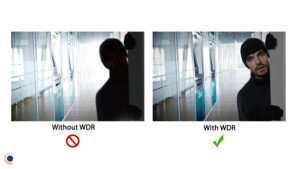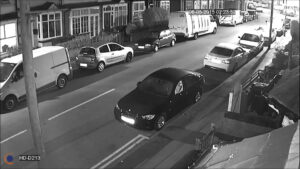
In the previous article we discussed two home security camera placement tips and now we are to discuss three more tips so you can know where to install home security cameras to maximize its effectiveness.
Top 5 Tips on Where to Place Home Security Cameras (Part 1)
#3. Common Mistakes on How & Where to Place Security Cameras at Home
Both indoor and outdoor security camera placement decides if your camera will work at its best. Take a look at these common mistakes so you can avoid them when considering where to place home security cameras.
-
Forget to Secure Indoor and Outdoor Surveillance Cameras.
One of the biggest mistakes people make is not securing their security devices, which means surveillance cameras can be easily tampered with. So where to place outdoor home security cameras to avoid possible vandalism? Generally, put the camera 9 feet above the ground will be safe.
Security camera placement inside and outside home may be a little different, since outdoor security cameras are easier to be damaged in harsh weather conditions, or stolen by thieves.
-
Think Cameras are Able to Multitask
Cameras are not able to multitask. You need to decide what task you want your camera to perform when considering the placement. People often forget the camera cannot pick up someone’s face, license plate, and the house across the street all at once, if they don’t have a plan of where to place home security cameras ahead. Preparing a home security camera placement diagram is important so that every camera plays its biggest role.
-
Place Cameras at the Highest Point
Many people place their cameras at the highest point of their property, thinking it is the best site to put CCTV camera to view full place. While it will give you a larger view, you will not get a very detailed look at any criminal’s features. You may catch just a figure on the camera instead of being able to identify a person, unless you install a PTZ security camera, which sees details as well as large view angles without damaging the video quality.
-
Use Cameras without a Wide Dynamic Range at Doorways and Windows
Many of you may fail to take whether the camera is WDR enabled into account on how to locate exterior cameras (especially those at doorways and windows), resulting in the hardly identifiable images.

What’s WDR in CCTV/IP cameras? When part of an image is extremely dark but another part is bright, you can’t see any details in the dark area without WDR (wide dynamic range) in the camera, as the below image shows.
So when you making decisions on where to place home security cameras, make sure the cameras for entrances have the WDR feature.
-
Fail to Provide Enough Lighting
No matter where you place home security cameras, don’t forget to deal with the lighting issue for night time monitoring. If yours are not night vision security cameras, you should provide enough lighting so as to record clear footage even in the dark. However, putting cameras too close to bright lights will cause the picture to be disrupted. And outdoor video surveillance camera pointing to direct sunlight will cause stripes in the image.

#4. Best Home Surveillance Cameras
Have a clear idea of where to position CCTV cameras at home already? Then you are only a step away from a secure home: finding a best home security camera to watch all these essential places for you.
The battery powered camera, thanks to its flexibility, easy installation and affordable price, has already become the first choice for people to boost their home security. It will start recording if there is any movement, so you will know all that matters during the past days, weeks even months. Matching it with a solar panel, you don’t need to even think about the battery recharging.
Bonus Tips: The motion detection will be more accurate if you put the camera in the direction crossing the possible intruder instead of facing it. For example, the best home security camera placement should be like this:

#5: Check Home Security Camera Placement Laws
This security camera layout guide lets you know these common mistakes and suggested spots for installing security cameras at home. Besides, don’t forget to look at some other things when considering where to place home security cameras, such as, security camera placement laws. It is of great necessity to think about where it is legal to put surveillance cameras. You may have doubts like:
“My neighbor pays very close attention of my moves in my backyard. His outdoor surveillance camera is under the roof and the fence between us is only 6 feet tall. He records everything of my backyard activities and I feel like I have no privacy at all.”
Generally, pointing a security camera to others’ property (roof, windows, light, etc.) will invade other people’s privacy, which is regarded as illegal.
Take-away info to make quick decisions: Place the camera above the front door and off-street windows (at about 9 feet above the ground) to cover the most vulnerable areas around your home and avoid potential vandalism. Also consider putting the camera at the back door, the garage, the basement, the driveway or the second floor for higher level security. But take a second thought if you want to place the camera inside your home behind a glass window, which may cause window glare and other problems.
Source: ReOlink



































































